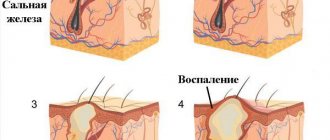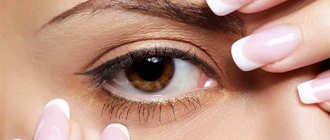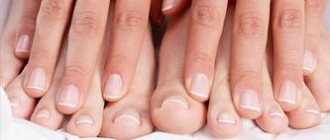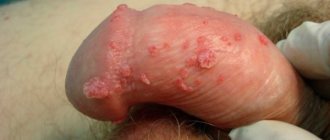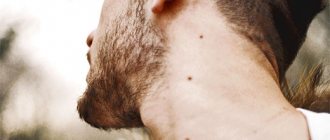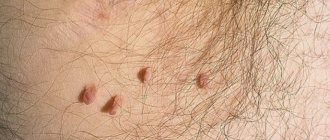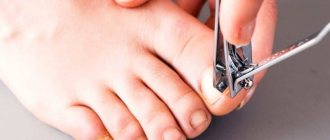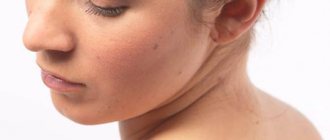If you notice a wart on your hand, don't panic. It is especially dangerous to try to remove it yourself and self-medicate. This article will help you figure out what to do if you find a wart and who to contact with this problem.
If you have a wart on the surface of your skin, you need to make sure that it is this and not another skin disease. To do this, you need to contact a specialist. Only a doctor who pays attention to the following external signs of a growth can know exactly what warts look like:
- The size is most often less than one centimeter;
- According to tactile sensations, warts are dense and have a flesh-brownish color;
- In more frequent cases, the growths quickly multiply and form clusters. But there are also single foci of appearance;
- If the warts are old, then they have a thickened, rough top layer;
- Warts do not cause pain upon contact. But in the case when the root of the growth has grown too deeply into the skin, the person may feel pain;
The main reason why warts appear is the human papillomavirus. More than half of the people on earth have this virus in their bodies. If one person has a stronger immune system that can suppress this virus, then others have a weaker one, as a result of which the pathogen provokes the formation of growths.
Types of warts
There are different types of warts depending on their location on the body, color, size, shape and type of pathogen.
Common or vulgar warts
The most common, their appearance does not depend on the age or gender of the patient. They are located on the hands, between the fingers, on the back of the palms (less often on the palms themselves). Vulgar warts have an irregular or round shape and, due to their flesh-pinkish color, are usually not very noticeable on the skin. The size varies from 1 to 3 mm; with prolonged infection and lack of treatment, groups of neoplasms may appear on the affected area.
Flat warts
Neoplasms of this type more often appear in children and adolescents, which is why their second name is juvenile warts. They are flesh-colored or light brown nodules of oval or round shape, with a smooth surface, slightly rising above the skin. They are predominantly localized on the skin of the face, neck, arms and upper torso.
Plantar warts
This type of wart appears exclusively on the skin of the feet, which is how it got its name. It is a rough growth with a keratinized layer of skin or a group of such growths. The skin around plantar warts loses its natural color and becomes gray-yellow. The surface of the wart becomes hard and begins to put pressure on the healthy tissue around it, causing severe discomfort.
Hanging warts
A feature of this species is the presence of a narrow articulation with the surface of the skin, the so-called “leg”. Hanging warts can be oblong, round or irregular in shape and pink or reddish in color. Such warts are localized on the neck, face, armpits, and under the breasts in women. Often, the appearance of numerous hanging warts signals a sharp decrease in the body’s immune status.
Senile warts
This type of wart most often affects the skin of older people. They are also called seborrheic warts or keratomas. They develop due to age-related changes and deterioration of metabolism from epidermal cells, often affecting the upper part of the hair follicles. Keratomas have a round shape, clearly defined boundaries, and are localized on the scalp or face. The size varies from a few millimeters to 4-5 cm.
Genital warts
Genital warts or condylomas are the most unpleasant and painful type of neoplasm. Their causative agent is human papillomavirus types 6 and 11. Genital warts affect the skin bordering the mucous membranes: on the lips and eyelids; in the genital area, urethra, anus.
Genital warts have a nodular growth pattern that is often compared to a cauliflower or cockscomb. Condylomas are connected to the surface of the skin through a thin “leg”. Due to their localization in areas of the body that are subject to mechanical irritation, there is a high degree of injury to condylomas and adjacent tissues, infection and the development of an inflammatory process with the formation of exudative or purulent discharge.
How to recognize?
Palmar warts are similar in appearance to calluses, but differ in the following features:
- Compacted structure.
- In some cases the dimensions exceed 1 cm.
- If a growth appears on the palm, new nodules may form on the healthy adjacent skin.
- At the initial stage, the surface is transparent and smooth. If the case is advanced, a horny thickening appears at the site of the lesion.
- When creating a growth on the palm in the form of a wart, pain is usually not observed. It makes itself felt when the roots have grown to the muscle layer.
- In some cases, thick black dots appear on the surface of the wart.
If an unknown neoplasm appears on the skin of your hand and has the signs listed above, you should visit a dermatologist.
Causes of warts
The appearance of warts is caused by increased activity of the human papillomavirus in the body. Infection occurs through contact and household contact: through touch, handshakes, common objects and in public places if personal hygiene rules are not followed. Genital warts are transmitted sexually.
The virus becomes active in the presence of factors such as:
- severe or chronic stress;
- past infectious diseases;
- reduced immunity;
- hormonal imbalances, improper metabolism;
- increased sweating;
- trauma and microtrauma of the skin;
- wearing clothes and shoes made of non-natural materials.
If the disease is asymptomatic, it can only be diagnosed through laboratory testing.
Warts in adults
The appearance of papillomas or warts is possible at any age. Gender does not play a special role - both men and women are susceptible to HPV. At the same time, the risk of developing warts in women is higher, since their immunity is often weakened due to hormonal levels, pregnancy, and breastfeeding. Due to their anatomical structure, women are also more susceptible to the appearance of warts on the genitals, in particular condylomas, which increase the risk of developing cervical cancer.
In men, warts appear only in cases of a sharp decrease in immunity, which does not happen so often with the stronger sex. At the same time, men extremely rarely act as carriers of HPV types 16 and 18, which provoke the development of cancer.
What is not recommended to do
It should be remembered that:
- Under no circumstances should you self-medicate without visiting a doctor. In some cases, warts can be cancerous, and treatment without a specialist can be disastrous.
- Many folk remedies for fighting papillomas can cause burns and scars.
- You cannot bandage papillomas to remove them. This can cause the infection to spread throughout the body.
Be sure to read:
Lapis pencil for removing warts
Warts in children
Warts are a common occurrence in children and adolescents, since their immunity is not fully developed, as a result of which they are easily infected with papillomaviruses. An important role is played by the fact that children attending kindergartens and schools, as a rule, are in increased stressful conditions, which negatively affects the body’s protective abilities. In addition to the contact and household method of infection. Intrauterine infection from the mother is also possible.
Most often, children develop vulgar, juvenile or plantar warts, while juvenile warts disappear on their own by the age of 14-18.
Prevention
Warts on the palms form suddenly and cause a lot of trouble. Simple rules will help prevent this process:
- Wash your hands regularly and thoroughly, especially after contact with someone who has skin changes.
- Existing scratches and abrasions should be immediately disinfected.
- When working with caustic chemicals, be sure to use protective equipment for your hands.
- Children and teenagers should adhere to a proper daily routine and a healthy diet.
- Avoiding stress and lack of sleep plays an important role in prevention.
These simple steps will prevent new tumors from appearing.
Treatment of warts
When treating warts, it should be understood that it is impossible to completely eliminate the pathogen - human papillomavirus - from the body. Once in the body, it remains in it forever, but a healthy immune system is able to keep it under control and minimize the manifestations of its vital activity.
The very fact of the appearance of warts indicates a decrease in the immune status of the body, therefore, it is necessary to include measures to strengthen the immune system in HPV therapy. With a reduced protective reaction of the body, even with successful removal of warts, there is a high probability of relapses. However, in people with strong immunity, warts can go away on their own.
Therapy should be selected by a competent doctor after a thorough examination. Self-medication is unacceptable, since a non-specialist will not be able to distinguish a wart from a malignant neoplasm. wart removal is also decided by a specialist - an injured neoplasm can degenerate from benign to malignant.
There are the following ways to get rid of warts.
- Cryodestruction (freezing with liquid nitrogen). This method is especially effective against common warts. The neoplasm is exposed to liquid nitrogen for 10-30 seconds. This method is good for its low risk of injury; complete removal of the wart requires from 1 to 5 sessions.
- Laser coagulation (laser removal). The tumor is removed in parts under local anesthesia. A mark in the form of a depression remains at the site of the wart, which disappears after about a month.
- Electrocoagulation (removal by electric current). The wart is removed with a thin metal loop using high-frequency current. This method is characterized by the absence of bleeding and additional tissue disinfection. The neoplasm tissue remains undamaged and can therefore be sent for histological examination. Traces of manipulation disappear within a week.
- Surgical excision. This method is used only in extreme cases, when the tumors are too large or are grouped into a single conglomeration. Under local anesthesia, the wart is removed with a scalpel, as in conventional surgery. The removed material is sent for histological examination. The presence of scars at the excision site depends on the skill of the surgeon who applied the sutures.
- A chemical treatment method that uses various acids or alkalis. This method is the most painful, traumatic and dangerous, since the risk of secondary infection of tissue at the site of exposure is extremely high. When deciding to use it, it is worth remembering that you can only act on the wart itself, without affecting the skin near it.
Preparations for the treatment of warts
Local remedies are used to treat warts, but their effectiveness depends on the age of the tumor - the “fresh” the wart, the greater the chance of removing it, and the state of the patient’s immunity.
- Viferon ointment. An antiviral agent that increases local immunity. Can be used for no more than a month, 1 to 4 times a day.
- Oxolinic ointment. This drug also has an antiviral effect. Apply to the wart 1-3 times a day. The treatment period ranges from a week to several months.
- Imiquimod cream. Immunomodulator with antiviral effect. Apply at night 2-3 times a week. Treatment period is up to 3 months.
- Salicylic acid. A concentrated solution must be used. Used as a lotion once a day. In this case, it is necessary to take measures against the occurrence of chemical burns to the skin.
- Kolomak. The drug is in the form of a solution based on salicylic, lactic acids and polidocanol. Apply 1-2 times a day, but not more than 10 mg per day. The course of treatment is no more than a month.
- Verrucacid. The solution is effective against many types of warts. In addition to the antiviral effect, it coagulates the intracellular protein of growths, preventing the development of relapses. It is applied once; in the presence of large tumors, re-application is possible after 1-2 weeks.
Before using local remedies, you should consult a dermatologist and undergo tests to determine the nature of the tumors, since exposure to medications can cause wart cells to degenerate into malignant ones.


